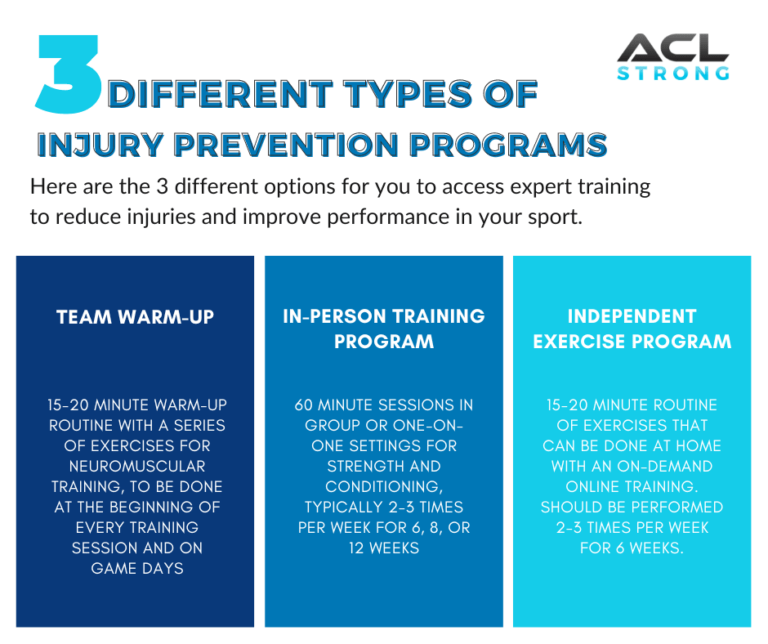Welcome to an article that will shed light on the importance of injury prevention plans and protocols in the world of Mixed Martial Arts (MMA). As someone who is passionate about the sport, it is crucial to understand the risks involved and how proper planning and protocols can help mitigate those risks. By implementing injury prevention strategies, you can enjoy a safer and more sustainable career in MMA. Let’s explore how these plans and protocols can benefit you as a fighter.
Are you looking to protect yourself from injuries in MMA fights?
If you are a fighter or training for mixed martial arts (MMA), you understand the physical demands and risks involved in the sport. Injuries are unfortunately common in MMA, but there are ways you can protect yourself and reduce the risk of getting hurt. In this article, we will discuss the importance of injury prevention plans and protocols in MMA to help keep you safe and performing at your best. Let’s dive in!

Understanding the Risks of MMA Injuries
Hey there! Before we get into the nitty-gritty details of injury prevention, let’s talk about the risks of MMA injuries. Understanding what can go wrong during a fight or training session is crucial in taking preventative measures. MMA is a physically demanding sport that involves a combination of striking, grappling, and ground fighting, which can all lead to various types of injuries. From sprains and strains to more severe injuries like fractures and concussions, MMA fighters are exposed to a wide range of risks every time they step into the cage.
Common MMA Injuries
In MMA, injuries can happen at any time, whether during a fight, sparring session, or even while training. Some of the most common injuries in MMA include:
- Sprains and Strains: These are injuries to ligaments (sprains) and muscles (strains) that often occur during sudden movements or improper technique.
- Bruises and Contusions: Being hit with punches, kicks, or elbows can lead to bruises and contusions, which are painful but usually minor injuries.
- Cuts and Lacerations: Fighting in close quarters with sharp edges like elbows or knees can result in cuts and lacerations that may require stitches.
- Fractures: The high impact nature of MMA can lead to fractures in bones, especially in the hands, feet, and face.
- Concussions: Head injuries from strikes or falls can cause concussions, which are serious and require immediate attention.
Understanding these common injuries is the first step in preventing them and ensuring your safety in MMA.
Importance of Injury Prevention Plans
Now that you have an understanding of the risks involved in MMA, let’s talk about the importance of injury prevention plans. Having a structured plan to prevent injuries is crucial for every MMA fighter, regardless of their level of experience. Injury prevention plans are designed to address potential risks and minimize the likelihood of getting hurt during training or competition. By incorporating preventive measures into your routine, you can stay healthy, improve performance, and prolong your fighting career.
Benefits of Injury Prevention Plans
Injury prevention plans offer a wide range of benefits for MMA fighters, including:
- Reduced Risk of Injuries: By identifying potential risks and implementing preventive measures, you can reduce the likelihood of getting injured during fights or training sessions.
- Improved Performance: Staying healthy and injury-free allows you to focus on your training and performance, leading to better results inside the cage.
- Longevity in the Sport: Preventing injuries can help extend your fighting career and ensure that you can continue to compete at a high level for years to come.
- Enhanced Recovery: Injury prevention plans often include strategies for faster recovery, allowing you to bounce back quickly after intense workouts or fights.
Taking the time to develop and follow a comprehensive injury prevention plan is essential for every MMA fighter who wants to stay safe and successful in the sport.

Components of an Injury Prevention Plan
Hey there! Now that you understand the importance of having an injury prevention plan in place, let’s break down the key components of a successful plan. An effective injury prevention plan should address various aspects of training, conditioning, and recovery to help keep you safe and injury-free. Here are some essential components to consider when developing your plan:
Proper Warm-Up and Cool-Down Routine
Before engaging in any rigorous physical activity, warm-up routines are essential to prepare your body for the demands of training or fighting. A proper warm-up helps increase blood flow to your muscles, improves flexibility, and reduces the risk of injuries. Incorporating dynamic stretches, light cardio, and mobility exercises into your warm-up routine can help you prepare for intense workouts without straining your muscles or joints.
On the other hand, cool-down routines are equally important in preventing injuries after training sessions. Cooling down with static stretches, foam rolling, or light exercises can help reduce muscle soreness, improve flexibility, and promote recovery. Make sure to allocate time for both warm-up and cool-down routines before and after every training session to keep your body in top shape.
Technique and Form Correction
One of the most common causes of injuries in MMA is poor technique or form during training or fights. Improper striking, grappling, or defensive techniques can put unnecessary strain on your muscles and joints, increasing the risk of sprains, strains, or more severe injuries. Working with a coach or trainer to correct your form, technique, and posture can help prevent injuries and improve your overall performance in the cage.
Strength and Conditioning
Building strength, endurance, and cardiovascular fitness are vital aspects of injury prevention in MMA. A well-rounded strength and conditioning program can help you develop the physical attributes necessary to withstand the demands of training and fighting. Incorporate exercises that target different muscle groups, improve cardiovascular fitness, and enhance overall athleticism to stay strong and resilient against injuries.
Recovery and Rest
Hey there! How are you feeling after your training session? Recovery and rest are crucial components of injury prevention in MMA. Giving your body enough time to rest and recover between workouts is essential for preventing overuse injuries and burnout. Make sure to prioritize sleep, nutrition, hydration, and rest days in your training schedule to allow your body to recover and repair from intense workouts.
Incorporating recovery strategies like massages, ice baths, foam rolling, or stretching can help alleviate muscle soreness, reduce inflammation, and promote faster recovery. Listen to your body and give yourself the time and rest you need to prevent injuries and perform at your best.
Injury Monitoring and Management
Injuries are sometimes unavoidable in MMA, but how you manage and monitor them can make a significant difference in your recovery and performance. If you experience pain, discomfort, or any signs of injury during training or fights, it’s crucial to address them promptly and seek medical attention if necessary. Ignoring minor injuries or pushing through the pain can lead to more severe problems down the line, affecting your ability to train and compete.
By monitoring your body for any signs of injury, staying in communication with your coaches and healthcare providers, and following proper rehabilitation protocols, you can effectively manage injuries and prevent them from becoming more serious.
Implementing Injury Prevention Protocols
Now that you have a good understanding of the key components of injury prevention plans, let’s talk about implementing injury prevention protocols in your MMA training. Whether you are a beginner or an experienced fighter, having protocols in place can help you stay safe, perform at your best, and avoid unnecessary risks. Here are some practical tips for incorporating injury prevention protocols into your training routine:
Listen to Your Body
Hey there! How’s your body feeling today? Listening to your body is essential in preventing injuries and maintaining your overall health in MMA. Pay attention to any signs of pain, discomfort, or fatigue during training sessions, and adjust your intensity or technique accordingly. Pushing through pain or overtraining can increase the risk of injuries and hinder your progress in the sport. Remember that rest and recovery are just as important as intense workouts in preventing injuries and staying healthy.
Communicate with Your Coaches
Building open communication with your coaches or trainers is vital in injury prevention and management. Your coaches can provide valuable feedback on your technique, form, and overall performance, helping you identify potential risks and improve your training routines. If you experience any pain or discomfort during training, don’t hesitate to communicate with your coaches and seek advice on how to address the issue. Working together with your coaches can help you stay safe, healthy, and successful in MMA.
Gradual Progression
Progressing gradually in your training is key to preventing injuries and building resilience in MMA. Avoiding sudden spikes in intensity, volume, or frequency of workouts can help reduce the risk of overuse injuries and burnout. Gradually increasing the difficulty of your workouts, sparring sessions, or fight preparations allows your body to adapt and recover, improving your overall performance over time. Remember that consistency, patience, and smart progression are essential in injury prevention and long-term success in MMA.
Cross-Training and Recovery
Hey there! How do you recover after a tough training session? Cross-training and recovery activities play a crucial role in injury prevention and overall performance in MMA. Incorporating activities like yoga, Pilates, swimming, or cycling into your training routine can help diversify your workouts, prevent overuse injuries, and improve your overall fitness. These low-impact activities can also promote recovery, flexibility, and mental well-being, enhancing your physical and mental resilience in MMA.
Don’t forget to prioritize recovery strategies like massages, stretching, foam rolling, or ice baths to reduce muscle soreness, improve circulation, and promote faster recovery between workouts. Making recovery a priority in your training routine can help prevent injuries and keep you performing at your best in the cage.
Regular Assessments and Check-Ins
Regular assessments and check-ins with your coaches, trainers, or healthcare providers can help you track your progress, identify potential risks, and adjust your training routines accordingly. Establishing a baseline fitness level, setting specific goals, and monitoring your performance over time can provide valuable insights into your strengths, weaknesses, and areas for improvement. By staying accountable, motivated, and open to feedback, you can optimize your training, prevent injuries, and achieve your full potential in MMA.

Conclusion
Congratulations! You’ve made it to the end of our article on the importance of injury prevention plans and protocols in MMA. By understanding the risks of injuries in MMA, developing comprehensive injury prevention plans, and implementing practical protocols in your training routine, you can stay safe, healthy, and successful in the sport. Remember to listen to your body, communicate with your coaches, progress gradually, prioritize recovery, and monitor your performance to prevent injuries and perform at your best in MMA. Stay safe, keep training, and enjoy the journey as a resilient and injury-free fighter in the world of mixed martial arts!

